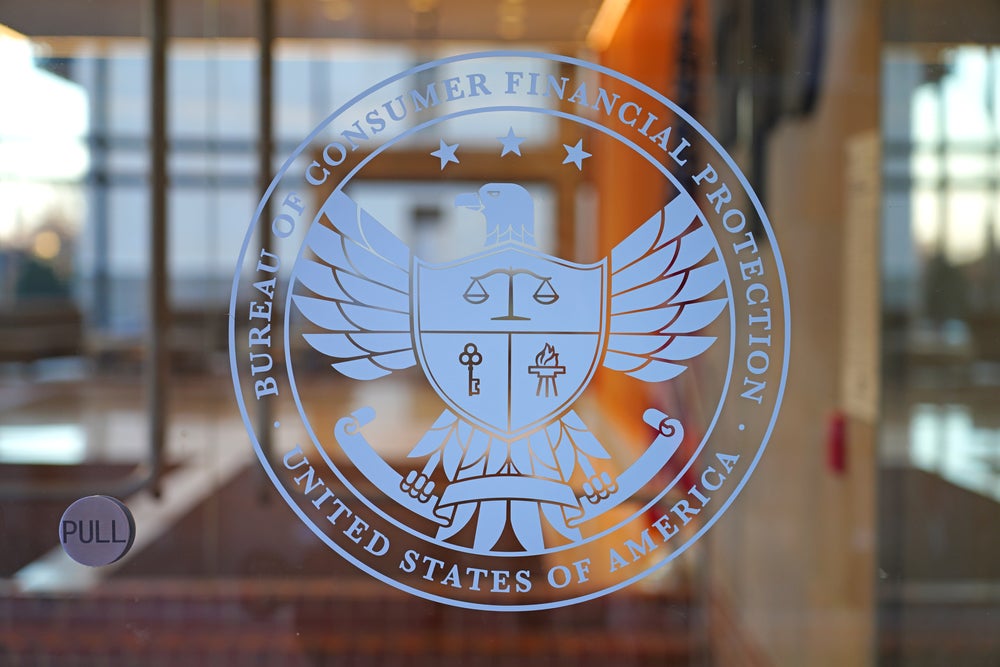
US credit cardholder balances have never been higher. Total US outstanding credit card debt eclipsed $1trn for the first time in 2022. More cardholders are being charged late fees. And more consumers are falling behind on payments and facing higher costs on growing debt.
The market stats are flagged up by the Consumer Financial Protection Bureau (CFPB) in its biennial report to Congress on the consumer credit card market. The report found that in 2022 credit card companies charged consumers more than $105bn in interest and more than $25bn in fees.
The report highlights areas of concern. These include more consumers carrying balances month to month. More cardholders are falling deeper into debt over time, while credit card company profits remain significantly above pre-pandemic levels.
“Last year, Americans paid $130bn in interest and fees on their credit cards,” said CFPB Director Rohit Chopra. “With credit card debt crossing the $1trn mark, we will be working to prevent bait-and-switch tactics when it comes to rewards and to increase refinancing activity so consumers can get lower rates.”
Under the Credit Card Accountability Responsibility and Disclosure Act (CARD Act), the CFPB regularly reviews developments in the credit card market. The latest report, the CFPB’s sixth, identified several recent trends in consumer credit card activity.
Credit card company profits remain high
Major credit card companies’ profits are now higher than pre-pandemic levels. This potentially signals a lack of competition in a market consistently dominated by the top 10 credit card companies. Profits for general purpose cards reached 5.9% in 2022, as measured by annual return on assets, compared to 4.5% in 2019, after peaking at 9.6% in 2021.

US Tariffs are shifting - will you react or anticipate?
Don’t let policy changes catch you off guard. Stay proactive with real-time data and expert analysis.
By GlobalDataAnnual percentage rates (APRs) continue to rise far above the cost of offering credit
Major credit card companies continue to set interest rates far above major indexes like the federal funds target rate, with an average APR margin of 15.4 percentage points above the prime rate in 2022. Margins continued to rise for across all credit score tiers, even as charge-off rates fell during the pandemic.
Consumers charged $130bn in interest and fees
Credit card companies charged borrowers the highest amount of interest and fees ever measured by the CFPB’s data. Cardholders were charged over $105bn in interest in 2022, along with $25bn in fees. For consumers who carried a balance, they paid about 20% of their average balance in interest and fees over the course of the year (18% of annualised balances on general purpose cards and 21% on private label accounts). Many cardholders with subprime scores paid 30 to 40 cents in interest and fees per dollar borrowed each year.
Consumers were charged $14.5bn in late fees, returning to pre-pandemic levels and up from $11.3bn in 2021
Late fees continued to be the most significant fee assessed to cardholders in both dollar amount and frequency. More consumers are facing difficulties paying their credit card bills on time, with delinquency rates rising since the end of pandemic relief programmes in 2021.
Credit card debt reached a record $1trn
The CFPB’s data showed credit card debt at the end of 2022 surpassed $1trn for the first time, and annual spending on credit cards increased to $3.2trn. The report also found that total average credit card balances per cardholder returned to about $5,300, about the same as before the pandemic. All in all, the data show more cardholders are being charged late fees, falling behind on payments, and facing higher costs on growing debt.
More borrowers getting caught in debt
More cardholders are carrying balances month to month or failing behind on payments, and a greater percentage of balances are going more than 180 days delinquent. Nearly one-tenth of credit card users find themselves in “persistent debt” where they are charged more in interest and fees each year than they pay toward the principal—a pattern that could become increasingly difficult for some consumers to escape. Pandemic relief programs in 2020 and 2021 enabled some cardholders to pay down credit card balances, but the number of people facing persistent debt could climb if interest rates remain elevated.
Consumers with revolving balances were charged more in interest and fees than they earned in rewards
In 2022, consumers who carried debt from month to month paid 94% of total interest and fees charged but earned just 27% of rewards at major credit card companies. Consumers who paid their balances off each month paid just 6% of interest and fees charged and earned 73% of total rewards.
The report also finds a continuing shift toward digital communication. Consumers are increasingly using digital portals, such as website and mobile apps, to manage their cards and make payments. Nearly 80% of cardholders are enrolled in their card’s mobile app, with adoption rates even higher for consumers under 65. The report also finds that credit card companies and debt collectors are relying more on text messaging and email to contact borrowers about past-due balances, alongside more traditional means like phone calls or postal mail.







